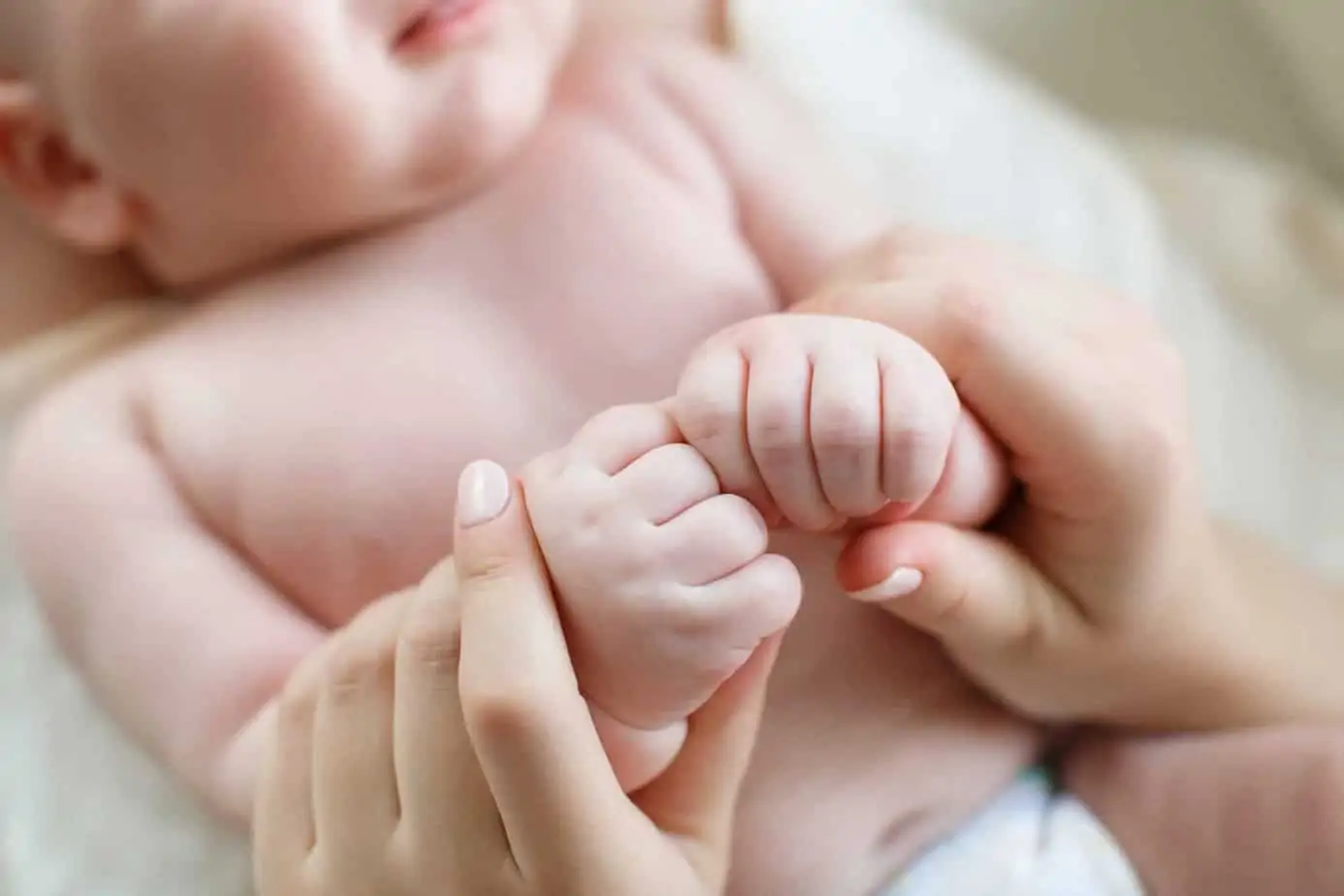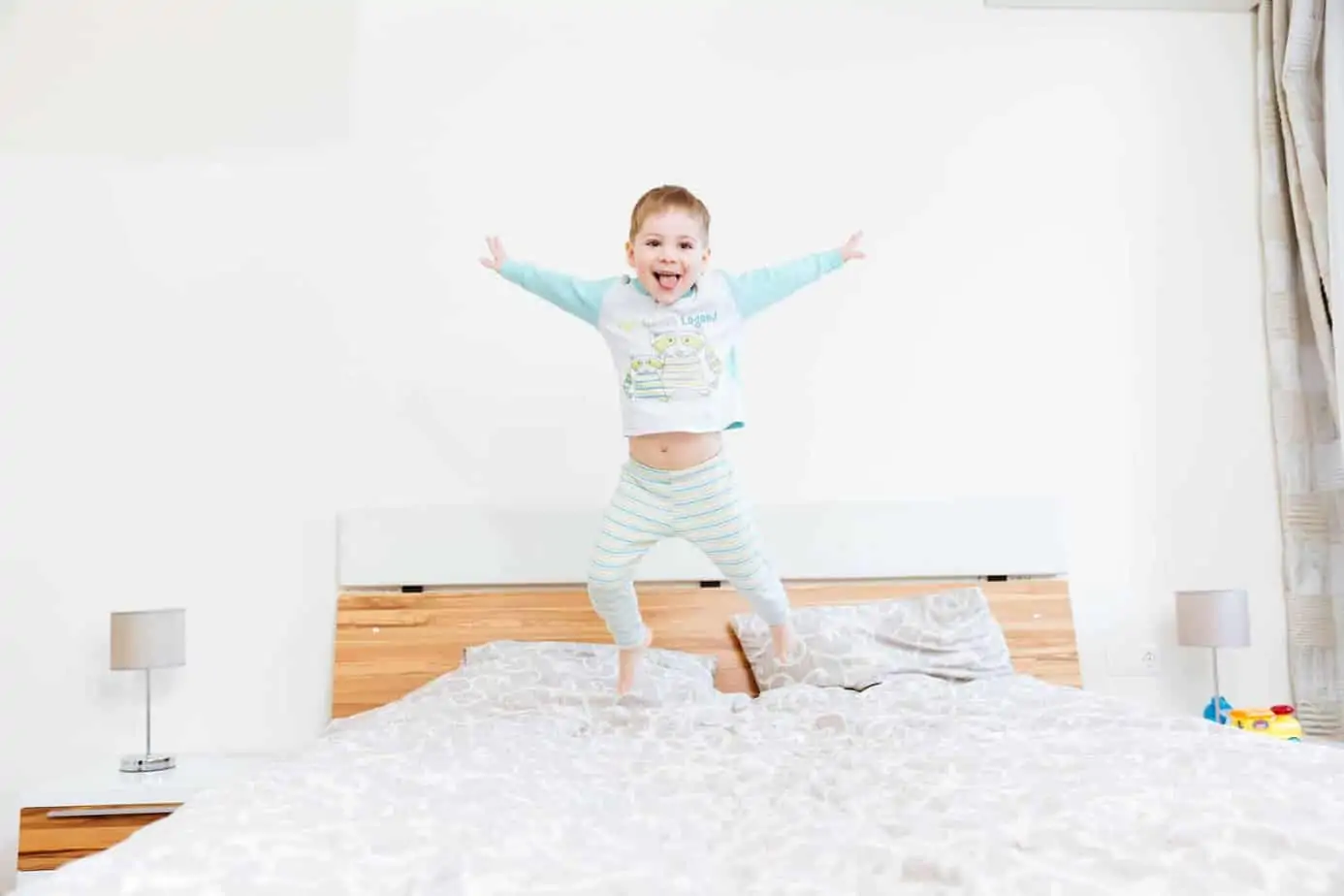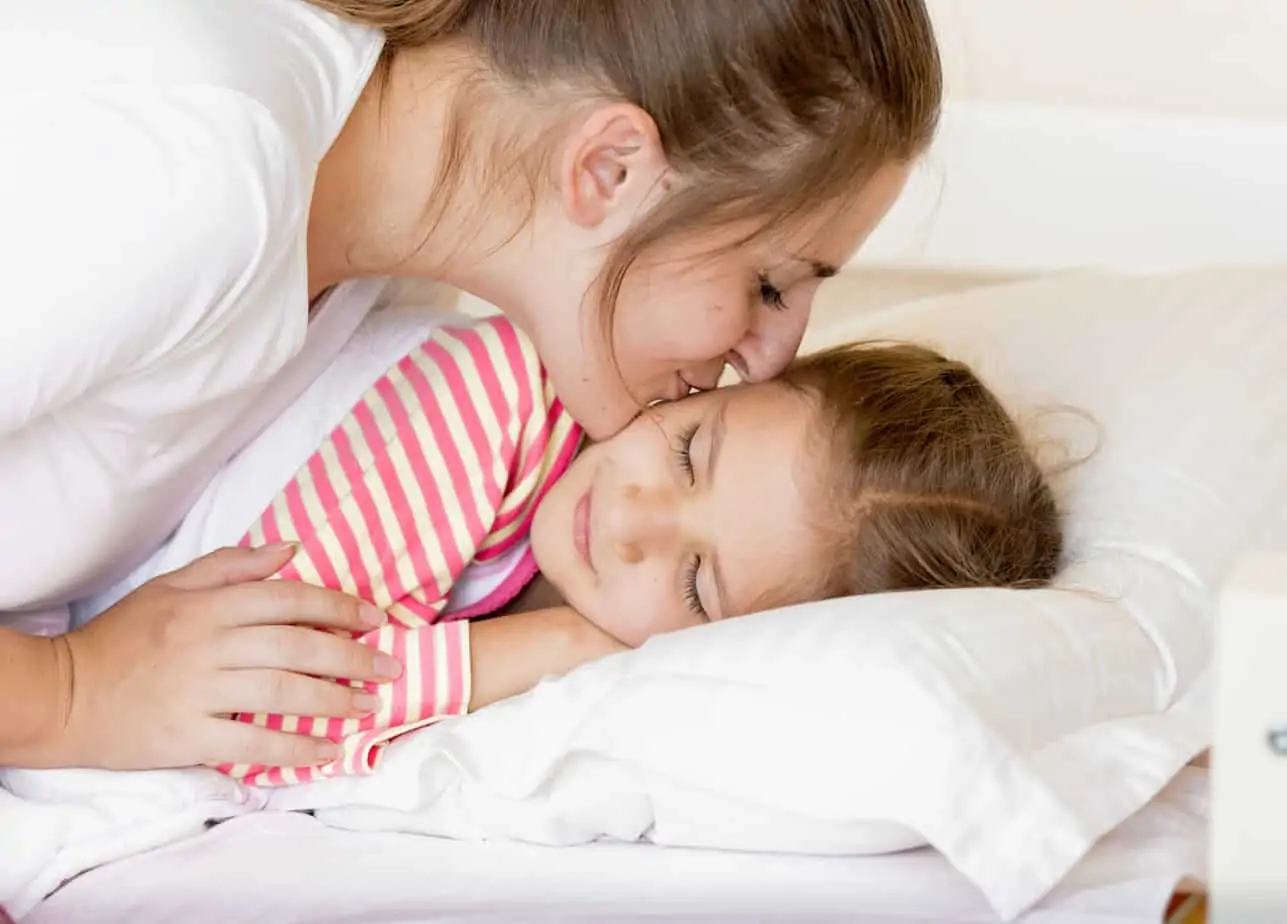Separation anxiety in babies & young kids is a normal stage of emotional development, but it’s undeniably painful. Ways to handle and ease separation anxiety in babies, toddlers and preschoolers. Try the Emotions Identification Bundle to help support your child in learning, naming, and communicating their feelings and deep dive into what’s going on, on the inside.

It’s important to note there are two types of age-specific separation anxiety.
There is the kind that peaks at 8 months and then again at 18months, stemming from a real fear of being away from a parent and then there’s the kind where your kids fear they’re missing out on fun stuff that goes on after they go to bed.
These two types are very different and are handled uniquely.
Download Your Routine Tracker – The Starting Place for Creating a Better Routine and Great Sleep Habits
Separation Anxiety: A Real Fear of Being Separated From Mom or Dad
Separation anxiety is perfectly normal and shows that your baby has a strong attachment to one parent or the other. In fact, separation is healthy, but at bedtime, separation anxiety can cause extra clinginess and peak periods of sustained crying for Mom or Dad – not good. This is the most common reason behind separation anxiety at the 8-9 month mark.
During this time, babies haven’t quite mastered object permanence –that once something leaves and is out of sight, it will return. To your child, when you leave the bedroom at nap or bedtime, they believe you’re never coming back and that’s super scary.
Nearing 18 months is when the second period of separation anxiety strikes which is also a major factor leading to the not-so-fun 18-month sleep regression.
While toddlers have developed object permanence by this time, they still don’t want you to leave because they miss you and you are a big source of their comfort as they try to fall asleep.
Here are five important keys to helping ease separation anxiety and sleep problems in young babies & toddlers.
Resource: Try the Emotions Identification Bundle to help support your child in learning, naming, and communicating their feelings and deep dive into what’s going on, on the inside.
1. Stick to a Solid Routine – Consistency is Key!
Get a copy of the Mastering Sleep & Schedules Ebook with suggestions (with times or without times) for newborns through preschool aged children. (Plus 97 pages jam-packed with good info on sleep, routines and all things little kids!)
2. Don’t Try to Sneak Out of the Room
You must be firm in your goodbye but also reassure your baby with love and the promise you’ll be back after nap or in the morning. Leaving without saying goodbye will only make them distraught.
3. Don’t show Your Cards
Filter your reactions – anxiousness, impatience, anger, frustration – these will make your baby’s emotions even worse because they can sense and see that bedtime isn’t a peaceful and calm time. If you’re feeling anxious about bedtime, they will be too!
4. Comfort Objects Ease Bedtime Separation Anxiety
Offer a lovey – something they can hold and snuggle with for comfort. Warm up a stuffed animal or blanket in the dryer for a few minutes so it is extra comforting when they cuddle and hold it close.
5. Be Stealth, Silent & Boring
You need to offer your comfort – but they can’t become dependent on you for it. Keep your comfort at bedtime and in the middle of the night, short, silent and boring. Once you’ve taken a moment to soothe them, then leave the room and don’t linger. If you engage with noises, talking and stimulating lights or movements, this will make them want to play and wake up further.
Separation Anxiety in Older Toddlers & Young Kids: FOMO
Toddlers and young children who don’t want to go to sleep and fight bedtime most often do this because they have fear of missing out (FOMO) on fun events should be assured there’s no dance parties and ice cream sundaes happening after you’ve tucked them in and turned off the lights.
And if you are having some kid-free fun, a little smudging of the truth won’t hurt.
Reassure your kids that after they go to bed, Mom and Dad are doing boring adult things like folding laundry, cleaning the house and scrubbing the floor with a teeny tiny toothbrush for the next three hours.
Boring, right?
Soon enough they’ll be fast asleep because they know they aren’t missing out on anything fun.
Additional Reading on This Topic
- 8 Common Toddler Sleep Problems & How to Handle Them
- 7 Ways to Beat Bedtime Stalling with Young Kids
- Is Your Kid Waking Up Too Early? How to Fix It
- 10 Helpful Ways to Calm the Kid Who Fights Bedtime
- Toddler Sleep Regressions: What You Need to Know About Your Two Year Old’s Sleep
- How to Establish a Peaceful Bedtime Routine for Your Baby
- How to Survive the 18 Month Sleep Regression & 2 Year Sleep Regressions Without Going Crazy
- Comprehensive Sleep Charts & Sleep Guidelines for Infants Through Adolescents
- The Benefits of Having a Daily Routine
- Create an Awesome Routine for Better Sleep Habits
Want even more?
Shop All Parenting Resources
Shop all of our parenting resources from self-regulation tools and managing big emotions to building self esteem and confidence. There are resources for all seasons of life!







If I have time, I’ll have to read that Ebook you suggested. It sounds like it’ll help when my daughter starts preschool. She’s already a little clingy, so I want to prepare and make sure we’re both ready for the change.